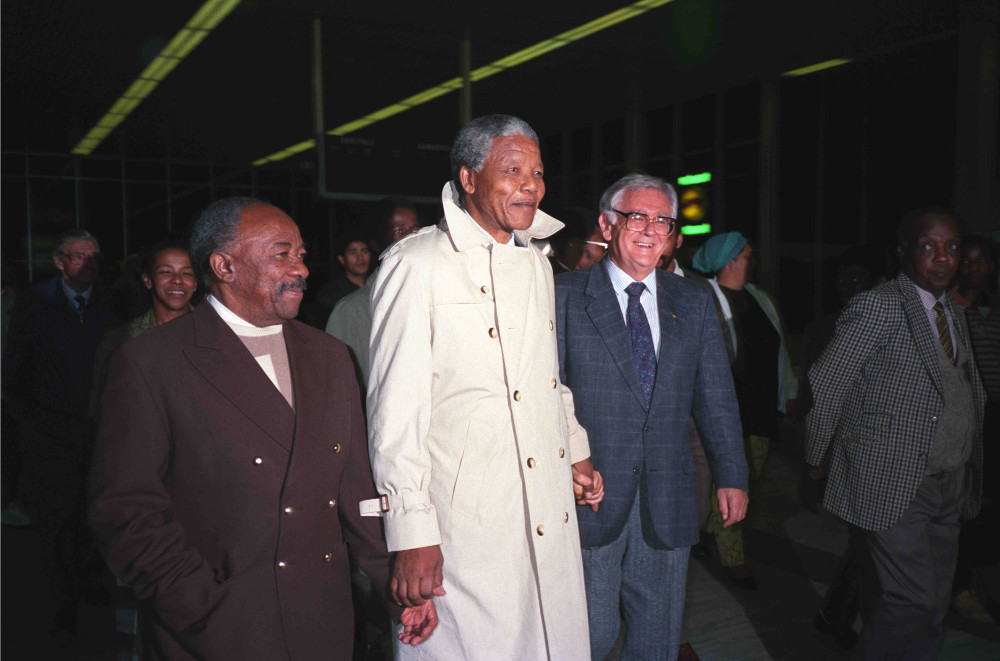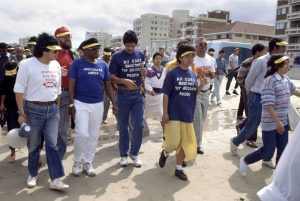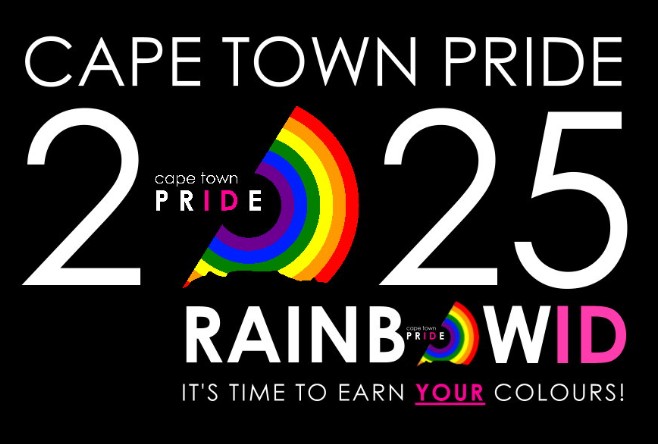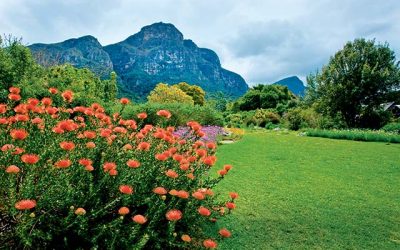While Nelson Mandela lies gravely ill, a grim tragi-comedy unfolds. A prominent political family is disassembling in public view, writes Shaun de Waal.
The exhibition Martyrs, Saints & Sell-Outs, a collection of late-apartheid news photographs by Benny Gool, Zubeida Vallie and Adil Bradlow currently on view at the Good Hope Gallery in Cape Town, is not just a diversion from this story but a way to reflect quietly on it.
Unavoidably, the Mandelas – Nelson and Winnie – feature prominently. There is one photograph in curator Siona O’Connell’s exhibition that deserves particular mention, also a long appreciative look from anyone wanting to lodge a happy picture of Nelson Mandela.
Photographed in April 1990, it shows the former Robben Island political prisoner at Cape Town airport (then still named after DF Malan). Formally, it’s nothing special, simply a news photograph shot on the fly by Gool. Mandela is wearing a cream trench coat, its collar raffishly turned up – most pictures from this time show the big guy in a starched National Party grey suit.
Mandela’s sartorial style, however, is secondary. It’s his left hand you should look at. Standing between two old pals, Alfred Nzo and Joe Slovo, Mandela’s hands clasp those of buddies. Affection is something you show, not speak.
When it was displayed at the National Arts Festival in Grahamstown in June, Gool’s photograph was hung next to a jubilant portrait of Walter Sisulu, fist pumping the air outside his Orlando West home.
The ANC flag in his left hand is homemade, its yellow band ragged, as if moth-eaten. Bradlow’s portrait of Mandela’s friend and fellow Rivonia Treason Trial accused is no masterpiece, but that’s not really the point of this exhibition.
Racially segregating beaches
Bradlow’s study of tactical collaboration across the colour line in the late 1980s stands in opposition to another picture he took about the same time. This photo, also in colour, shows a group of mostly coloured activists walking along Gordon’s Bay Beach in protest against the policy of racially segregating beaches.
“All God’s Beaches for all God’s People”, reads the slogan on the T-shirt worn by a moustached man in jeans walking alongside Archbishop Desmond Tutu. The avuncular man of the cloth, who was demonised in the white press at the time, is pictured in Bradlow’s photo wearing white pants and a blue T-shirt. It too bears a slogan: “Just call me Arch.”
Vallie’s photograph of Tony Yengeni, Cyril Ramaphosa and Allan Boesak marching under a trade union federation Cosatu banner in Cape Town is a remarkable study in optimism and thwarted hope.
Only Jay Naidoo, the former general secretary of Cosatu, who is pictured at the centre of the march, has maintained a dignified public face. Both Boesak and Yengeni, the former ANC chief whip, have been convicted of fraud; Ramaphosa, a unionist turned mining mogul, is indirectly implicated in the events leading up to the massacre of 34 mine workers at Marikana in 2012.
“In a time where we desperately search for heroes and heroines, perhaps we have been searching too long in the wrong place,” wrote Naidoo, chair of the Swiss-based Global Alliance for Improved Nutrition, in a recent blog post.
“It’s time to refocus our gaze and look towards to our people, where we will find legions of Mandelas who are working selflessly among the poorest, bringing hope to their doorways every day – in a world that, for all intents and purposes, seems to have stopped caring.”
A documentary
Martyrs, Saints & Sell-Outs is accompanied by a short documentary. In it, Vallie, a founding member of Afrapix, the influential nonracial collective of anti-apartheid photographers, modestly describes her work as “purely personal documentation”.
This humility can be diverting; her photograph of a white journalist protesting apartheid media repression by posing outside Independent Newspapers offices in Cape Town, her mouth gagged, possesses a recurring urgency.
In purely formal terms, many of the photographs on Martyrs, Saints & Sell-Outs are wanting. Bodies are oddly cropped, compositions imperfectly framed.
Gool tenders a fair response in the accompanying documentary: “You’re not looking for a work of art in someone’s misery.” These were images made in a rush, sometimes running backwards, always looking askance, at the bullyboys with guns behind the drifting white mist.
Martyrs, Saints & Sell-Outs is running at the Good Hope Gallery, Castle of Good Hope, Buitenkant Street, Cape Town, until October 11.







